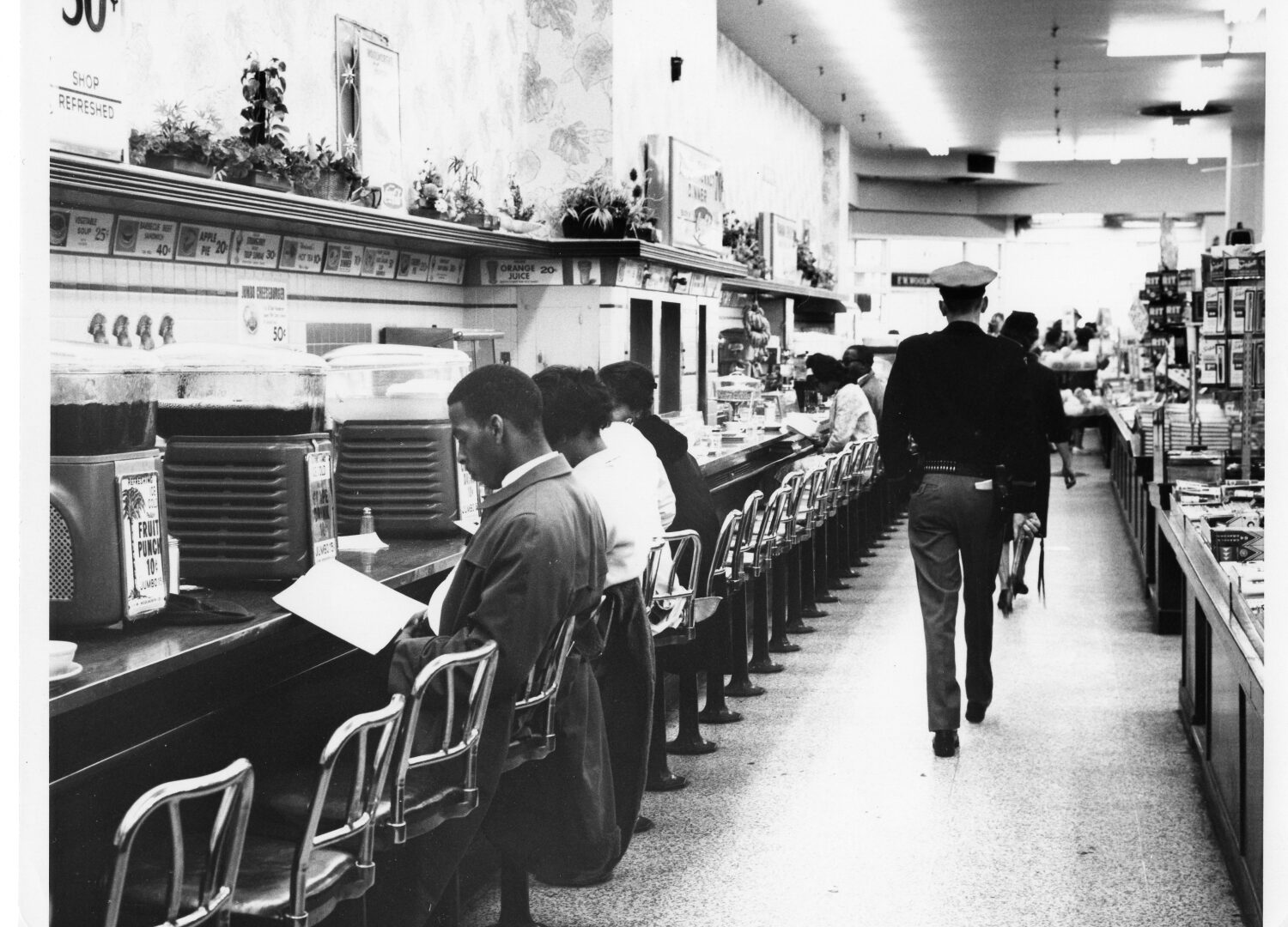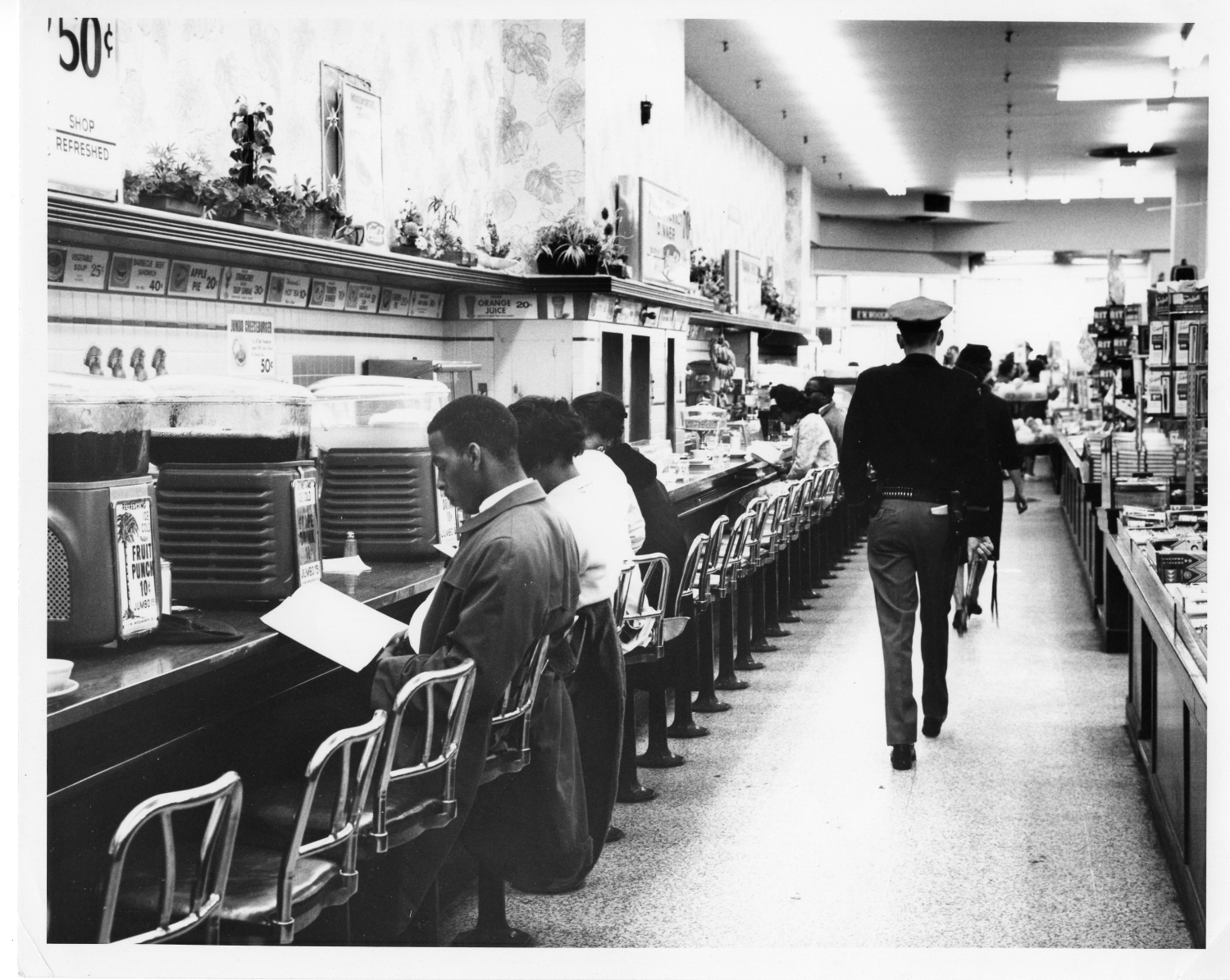Introduction
Civil rights activists relied on many strategies and tactics in their fight for legal, political, and economic equality. For example, they organized marches, protests, and campaigns that opposed racist laws and practices. They boycotted businesses that refused to hire black Americans. They led complex legal battles that aimed to dismantle racist laws. They organized politically by encouraging black Americans to register to vote and participate in elections at a time when black voters were intimidated and threatened if they appeared at polling places. They petitioned local and national lawmakers to enforce civil rights legislation. They also engaged in various acts of civil disobedience, which implied doing something that was illegal under inherently unjust segregationist laws. One popular act of civil disobedience was sit-ins, during which black individuals or groups would occupy space designated for white persons only. Sit-ins were organized in public spaces and private businesses. They were a form of a peaceful yet powerful demonstration that put economic, political, and social pressures on the economic, political, and social system that denied black Americans basic civil rights.
One popular site of sit-ins was a chain of stores F. W. Woolworth. In southern cities, the stores had lunch counters for white customers only. Dr. John Kirk from the History Department at the University of Arkansas at Little Rock argues that a sit-in at the F.W. Woolworth store in Greensboro, North Carolina, organized by four students from North Carolina Agricultural and Technical College on February 1, 1960, “truly ignited a sit-in movement.” It also served as inspiration for similar acts of civil disobedience that later took place in Arkansas. Kirk writes, “The first sit-in in Little Rock took place shortly after the Greensboro action. At 11 a.m. March 10, 1960, around 50 Philander Smith College students marched from campus to the F.W. Woolworth store on Main Street and asked for service at its whites-only lunch counter. The manager refused to serve the students and immediately alerted Police Chief Eugene G. Smith. The assistant store manager called Woolworth’s home office in St. Louis for instructions and then closed the lunch counter. When Chief Smith arrived he asked the students to leave. All but five did so. Those remaining, Charles Parker, 22; Frank James, 21; Vernon Mott, 19; Eldridge Davis, 19, and Chester Briggs, 18, were arrested for loitering.”
The arrest did not discourage civil rights activists and the sit-in from March 10, 1960, was not the only one at the F.W. Woolworth store on Main in Little Rock. In this activity, you will examine a photo that documents another sit-in at the F.W. Woolworth store in Little Rock.
Activity Questions
- Imagine that you do not know anything about this photo and about the history of sit-ins. Examine this photo. What do you see? Describe the scene in the photo.
- Now place this photo in its proper historical context. Look at the title, think of when and under what circumstances the photo was taken. What can we see in this photo when we know its historical context?
- What do you think about organizing sit-ins to fight for social justice? Do you think it was an effective strategy to fight against racial segregation? What social causes can you think of today that we could fight for by organizing sit-ins?
Primary Sources
To learn more about the primary sources featured in the activities above, click the following links:
Arkansas Social Studies Standards
US History Since 1890, Grades 9 – 12
- Strand: Era 9: Post-war United States 1945 to Early 1970s
- Content Standard 5: Students will analyze social, economic, and political changes in the United States between 1945 and 1970.
- Era9.6.USH.1 Analyze the roles of individuals, groups, and the government in securing civil rights during the mid-20th century using a variety of primary and secondary sources (e.g., minorities, women, NAACP, federal court cases, legislation, Twenty-fourth Amendment)
- Era9.6.USH.4 Examine domestic policies of the federal government between 1945 and 1970 and the outcomes from multiple perspectives (e.g., New Frontier, Great Society, civil rights, social issues)
- Era9.6.USH.5 Construct historical arguments of long-term effects of social and economic changes occurring during the mid-20th century using available data and multiple sources
African American History, Grades 9 – 12
- Strand: Illusion of Equality 1950-1970
- Content Standard 6: Students will analyze the African American experience from 1950-1970.
- IE.6.AAH.1 Analyze the various influences of African Americans on political change during the mid-1900s using primary and secondary sources (e.g., feminism, civil rights organizations, political organizations, and labor unions, military)
- IE.6.AAH.2 Examine the various influences of African Americans on social change using primary and secondary sources from multiple perspectives (e.g., migration, feminism, military, social organizations)
- IE.6.AAH.3 Examine various ways African Americans participated in the Civil Rights Movement and the effects of their actions using a variety of primary and secondary sources (e.g., sit-ins, boycotts, marches, speeches, music, methodologies, organizations)
- IE.6.AAH.4 Analyze the effects of legislative developments on the African American experience between 1950-1970 (e.g., voting, civil rights, fair housing, education, employment, affirmative action)
Arkansas History, Grades 7 – 8
- Strand: History Content Standard 7: Students will examine the impact of historical events and people on the development of Arkansas.
- H.7.AH.7-8.8 Analyze social, economic, and political effects of the Civil Rights Movement on various regions in Arkansas from multiple perspectives (e.g., integration, state legislation)
Arkansas History, Grades 9 -12
- Strand: Era 5: World War II Through the Civil Rights Era 1941-1967
- Content Standard 5: Students will analyze factors that influenced the perspectives of Arkansans from World War II through the Civil Rights Era.
- Era5.5.AH.9-12.4 Analyze the social, economic, and political effects of the Civil Rights Movement in various regions of Arkansas using primary and secondary sources from multiple perspectives (e.g., segregation; voting; integration of Fayetteville, Hoxie, and Little Rock School Districts; federal and state legislation)
Key Terms
Downloadable Guides and Handouts
We encourage K-12 educators to use History Alive: Virtually! in a way that will best match their classroom needs. The “Exercise” handout includes a complete exercise as featured on this website, the “Primary Sources” handout includes only primary sources used in the exercise, and the “Questions” handout includes analytical questions from the exercise but is editable and can be easily changed to best match students’ needs.
A Story Behind A Photo – Exercises


